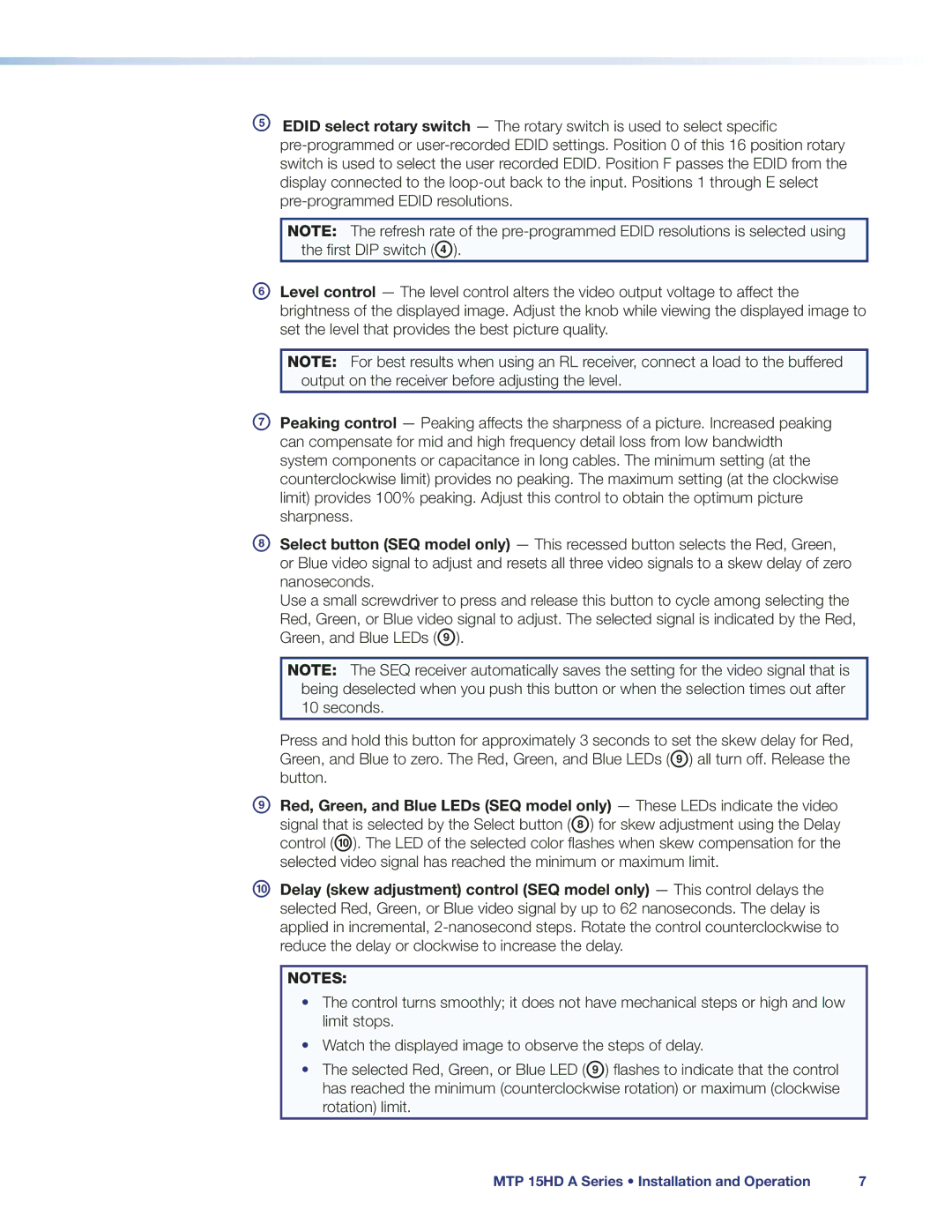
EEDID select rotary switch — The rotary switch is used to select specific
NOTE: The refresh rate of the
FLevel control — The level control alters the video output voltage to affect the brightness of the displayed image. Adjust the knob while viewing the displayed image to set the level that provides the best picture quality.
NOTE: For best results when using an RL receiver, connect a load to the buffered output on the receiver before adjusting the level.
GPeaking control — Peaking affects the sharpness of a picture. Increased peaking can compensate for mid and high frequency detail loss from low bandwidth system components or capacitance in long cables. The minimum setting (at the counterclockwise limit) provides no peaking. The maximum setting (at the clockwise limit) provides 100% peaking. Adjust this control to obtain the optimum picture sharpness.
HSelect button (SEQ model only) — This recessed button selects the Red, Green, or Blue video signal to adjust and resets all three video signals to a skew delay of zero nanoseconds.
Use a small screwdriver to press and release this button to cycle among selecting the Red, Green, or Blue video signal to adjust. The selected signal is indicated by the Red, Green, and Blue LEDs (I).
NOTE: The SEQ receiver automatically saves the setting for the video signal that is being deselected when you push this button or when the selection times out after 10 seconds.
Press and hold this button for approximately 3 seconds to set the skew delay for Red, Green, and Blue to zero. The Red, Green, and Blue LEDs (I) all turn off. Release the button.
IRed, Green, and Blue LEDs (SEQ model only) — These LEDs indicate the video signal that is selected by the Select button (H) for skew adjustment using the Delay control (J). The LED of the selected color flashes when skew compensation for the selected video signal has reached the minimum or maximum limit.
JDelay (skew adjustment) control (SEQ model only) — This control delays the selected Red, Green, or Blue video signal by up to 62 nanoseconds. The delay is applied in incremental,
NOTES:
•The control turns smoothly; it does not have mechanical steps or high and low limit stops.
•Watch the displayed image to observe the steps of delay.
•The selected Red, Green, or Blue LED (I) flashes to indicate that the control has reached the minimum (counterclockwise rotation) or maximum (clockwise rotation) limit.
MTP 15HD A Series • Installation and Operation | 7 |
